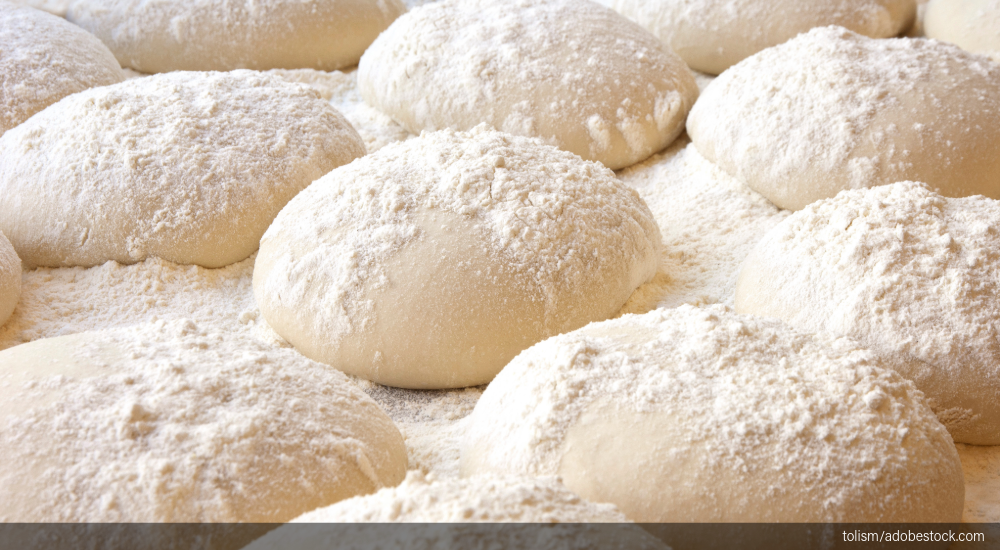Dough ball weight matters for every pizza style
How to pick the perfect size dough ball. It’s one of millions of questions any pizzeria operator needs to decide upon when starting something new. There are a couple of ways to go about this, but ultimately the decision is based off your preferences.
Traditional Dough Ball Weight Standards | Sticking to Tradition
Every style is going to have what’s considered the “original” way of doing things. Whether you’re looking at older recipes or talking to people, consider that these dough ball weights are steeped in the old ways. The rhyme and reason that once dictated these decisions may be different today. I love tradition just as much as the next pizzaiolo, but I am a firm believer that change is good. As long as we are making changes with respect to the original, then modernity is not a crime. Some weights are considered standard practice. I like to begin any new pizza journey by referencing these and then making tweaks as practice.
Neapolitan Style
The Associazione Verace Pizza Napoletana (AVPN) is an organization whose goal is to maintain and protect the standards of Neapolitan pizza. Their regulations are meant to preserve the traditional way of making this pizza style. According to these regulations, a true Neapolitan dough ball should “be proportionate to the diameter of the pizza to be made.” For example, a 200-gram dough ball will yield a pizza diameter of 22-24 centimeters, according to AVPN, while a 280-gram dough ball is enough for a 28-35 centimeter pizza.
Additional standards and requirements to be considered an AVPN-approved pizzeria are available at pizzanapoletana.org/en/. There, you will find a 28-page guide that includes everything you need to know.
Now remember, even though AVPN exists, everyone is doing something slightly different. The changes may be small – such as how large pizzaiolos are stretching their pizzas – but they produce big differences at the end, which makes every pizzeria unique.
Dough Weights for Other Pizza Styles
Detroit: For a 10-inch-by-14-inch pan, the standard dough ball range is 18-20 ounces.
Chicago Cracker Thin: For a 12-inch round, the range is 8-10 ounces.
Chicago Deep Dish: For a 12-inch round pan, the range is 19-22 ounces.
Sicilian: For a 12-inch-by-14-inch pan, the range is 32-40 ounces.
New York: For a 12-inch round, my preference is 12-13 ounces.
When it comes to round pies, there are multiple ways people determine their dough ball size. Some just do what others are doing. Some match ounce size to inch size, meaning a 14-inch pizza would require a 14-ounce dough ball. This formula does work and is quite common, but for those using grams to measure dough ball weights, it doesn’t convert.
Using the late great Dough Doctor Tom Lehmann’s method to calculate dough ball weight
The great “Dough Doctor” Tom Lehmann wrote about the equation some people use to calculate dough needed per square inch. Since I am no mathematician, I’ll leave that to the GOAT.
Here is his equation:
First, calculate the surface area using π x r2. (Reminder: radius (r) = ½ diameter.) If using a 12-inch pizza, that would look like this:
3.14 (π) x 36 (radius [or 6] squared) = 113.04 square inches
Once you’ve found the weight you like, it’s back to math. If 10 ounces is your preference for a 12-inch pizza, the math would look like this.
10 ounces ÷ 113.04 (surface area from the previous equation) = 0.0884642 ounces of dough per square inch.
Once you’ve figured out the dough per square inch, this will enable you to calculate the dough ball weight for any size pizza, per the thickness you like. You could take 0.0884642 and multiply it by 16 inches or 18 inches or 20 inches for larger pizzas. This will give you consistency across the board, regardless of pizza size. The stretching and topping are a whole other ball game, but having this equation will give you an advantage toward creating consistency within your kitchens and the final product.
The detail-oriented part of my brain likes that there is an equation that will tell me where to start. I normally do a combination of things when I’ve decided to change dough weights or add something new. I ask around to see what others are doing, and then I sit down and analyze. What do I like about those weights and what don’t I like? Too thin? Too thick? How is everyone opening their dough balls? Is there an emphasis on a thicker cornicione or a thicker middle? All of these questions weigh into the decision.
Once I’ve figured out what I’m looking for and accounting for the info I’ve gathered from others, I sit down with the equation. The good thing is that once you’ve figured out a starting point, making tweaks and changes is pretty easy. For those like me, math is not enjoyable. It’s a necessity, but it’s not something I choose to spend my free time doing if I don’t need to. So, doing the math up front is great because then you can leave it behind.
Laura Meyer is the owner of Pizzeria da Laura in Berkeley, CA.



